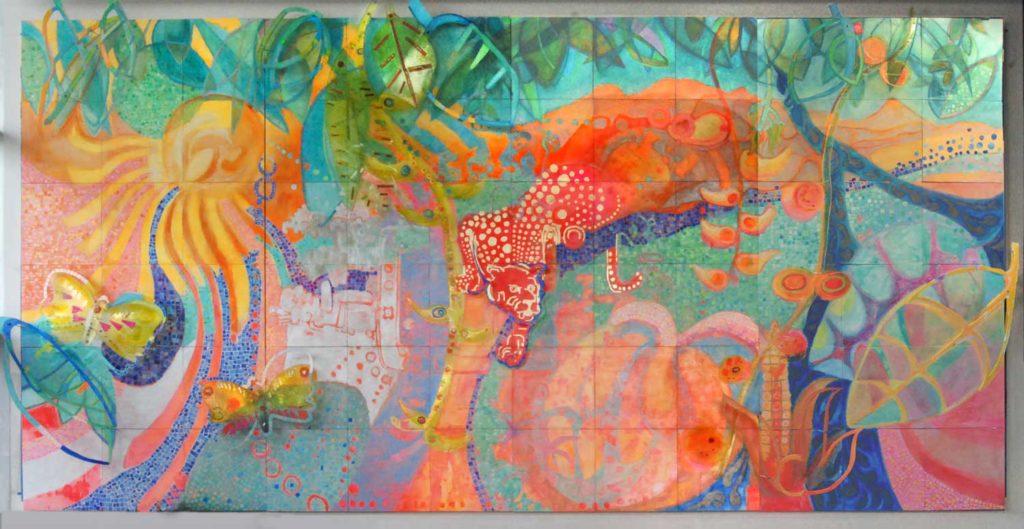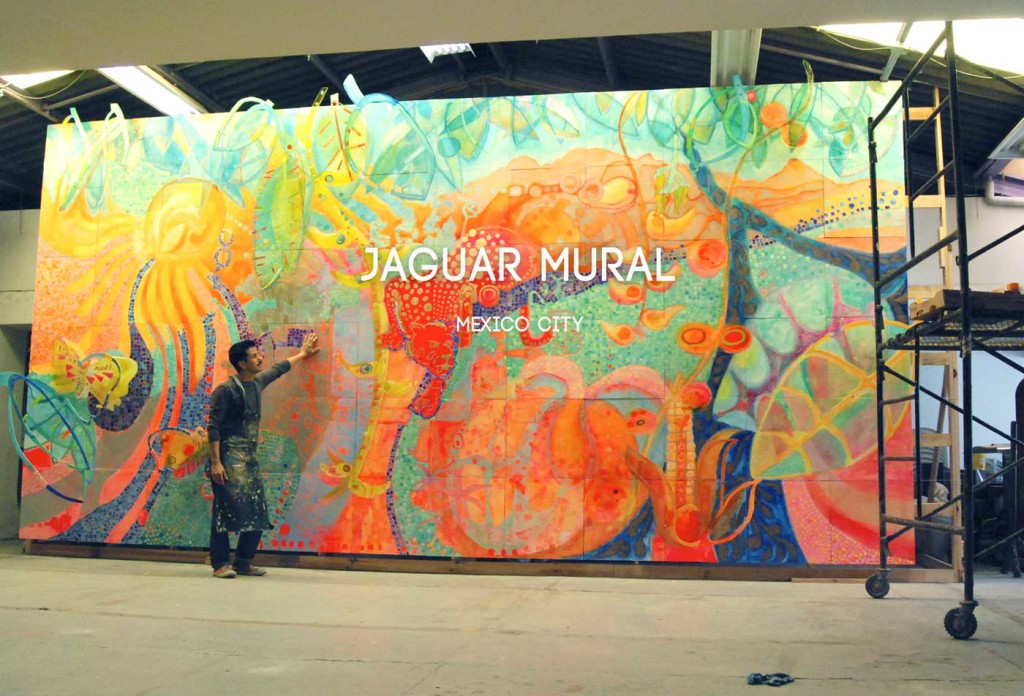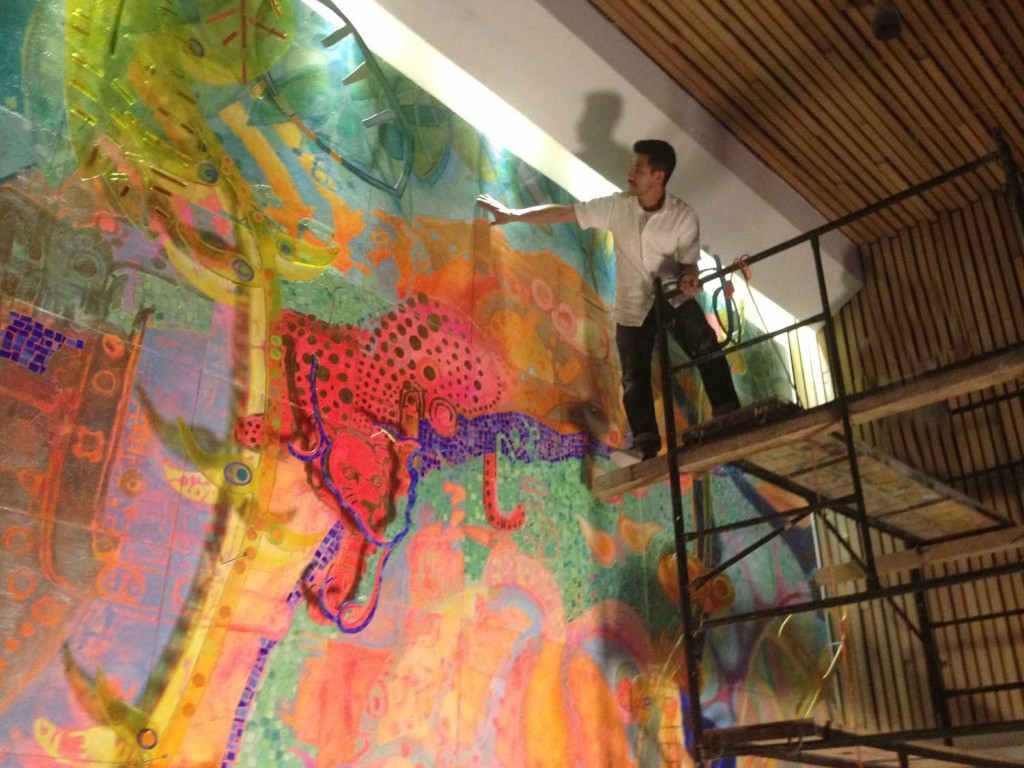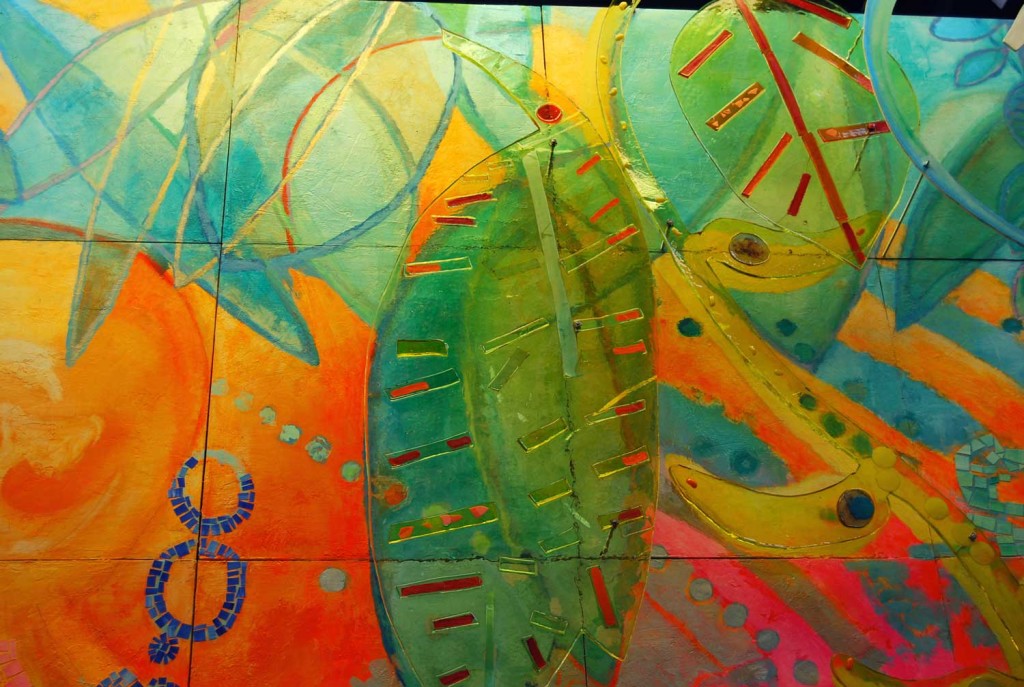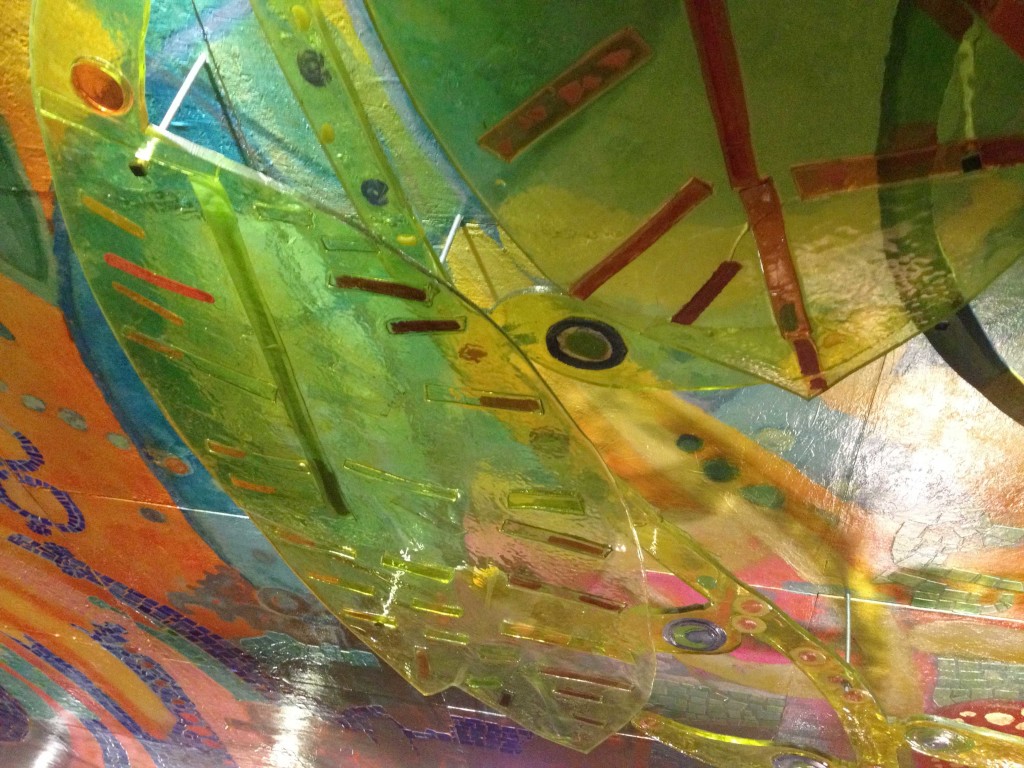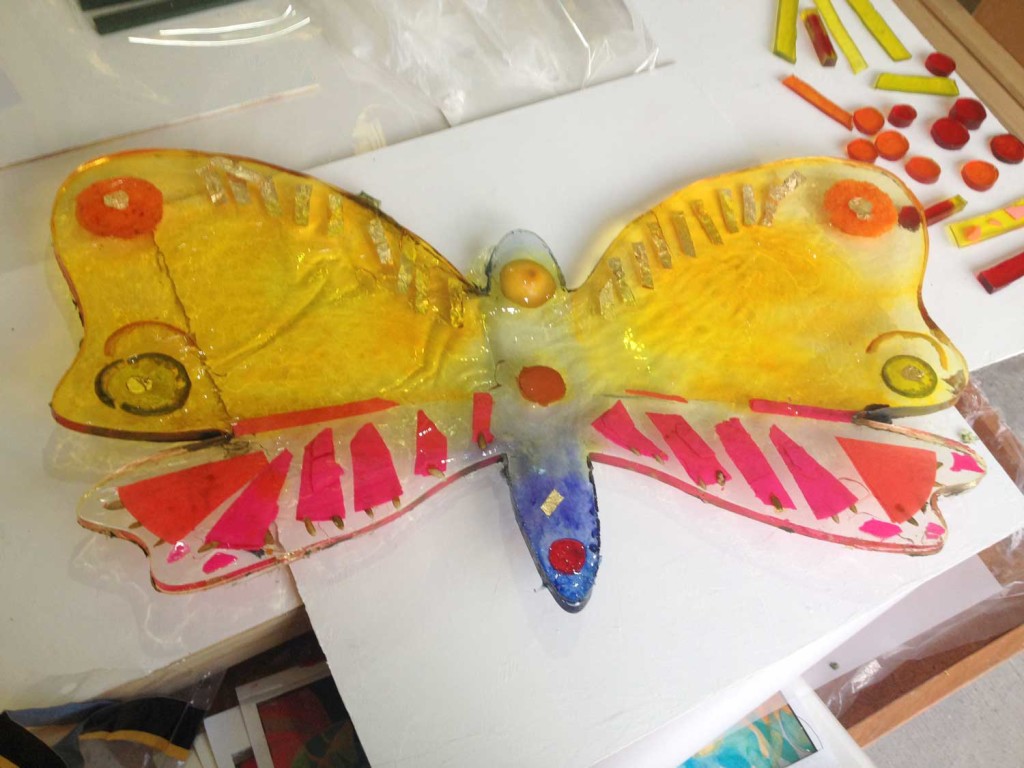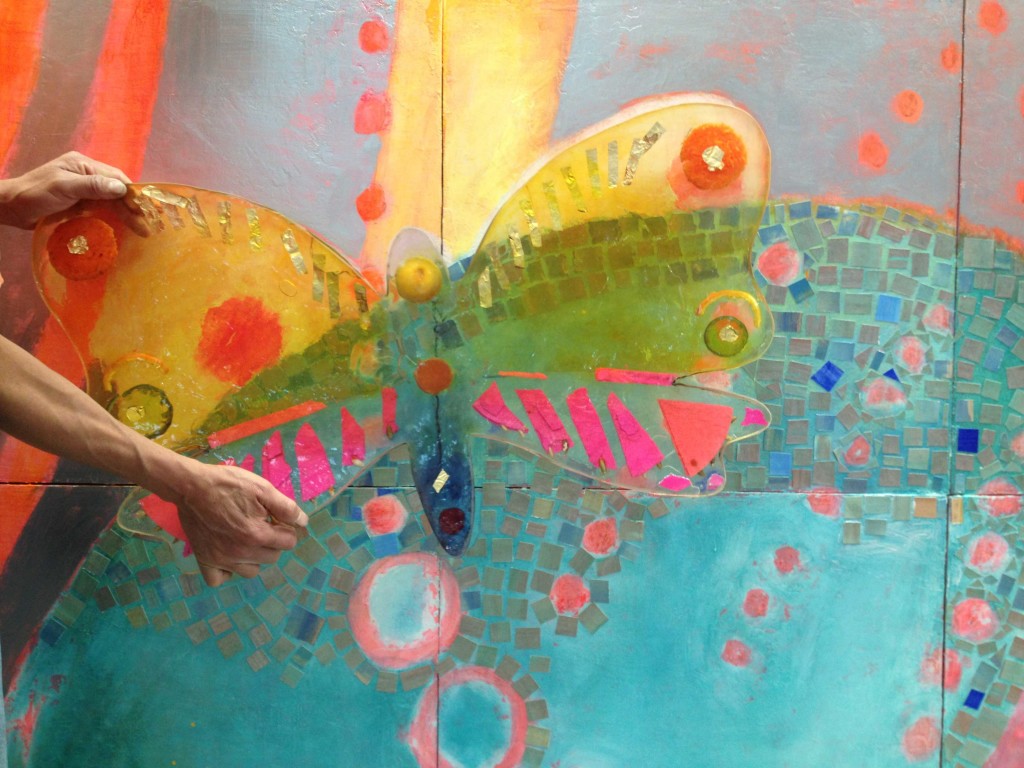Latin America’s rich cultural range serves as the conceptual inspiration for the mural, using symbolic elements to reflect values such as strength, diversity, and timelessness. The central image of the jaguar, a species exclusive to Latin America, is a figure of spiritual power, the mythic protector of Mayan royalty and bridge between the living and their deceased ancestors. The jaguar in the mural fulfills a similar role, bringing traditional imagery of Mesoamerican writings and the ancient Popocatepetl and Iztaccihuatl volcanos to a contemporary audience.
Informed by the surroundings during its artistic execution, the mural also incorporates many elements of Mexico City’s chaotic beauty, such as street vendors’ songs and the smells of their food. Resin integrates real Mexican candy into the design; there are seeds, sweet potatoes, and sweet lemons within the piece, and their colors and textures expand throughout the work. The mural connects these elements with depictions of traditional foods, as represented by the image of maize.
The twelve by six foot mural was originally intended to be painted in California and subsequently transported to Mexico City. To make the move possible, the mural had to be constructed as 72 separate square wooden panels. By the time the opportunity to execute the work in Mexico City from start to finish arose, these panels had become integral to the aesthetic design.
The mural is tridimensional in format, with wooden and resin panels superimposed over the main substrate. This layered technique uses optic play to evoke a ludic experience in the viewer. This playfulness is also evident in the variety of materials used: wood, resin, watercolor paper, acrylic paint, oil paint, golden leaves, and Mexican candies. The depth of these elements translates the historic nature of the mural’s subjects to a very immediate presence and gives the viewer’s eye a physical sense of interaction with the artwork and by extension, with the values and beauty of Latin American culture.

